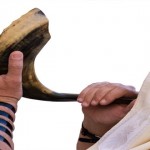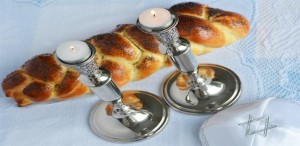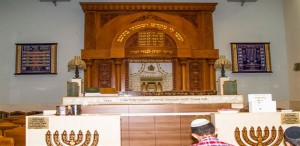The High Holidays – Are coming up and there are various ways you can get into the mood for this unique time of year. We listed three below.
Just some key phrases:
The ‘High Holidays’ – Referring to the time period from Rosh Hashanah until Yom Kippur.
Rosh Hashanah – Jewish New Year. Lasts for 2 days on the 1st/ 2nd of Tishrei. This year, the 25/26th of September.
Yom Kippur – The Day of Atonement. Lasts for 1 day on the 10th of Tishrei. There are several laws observed on this day including fasting and not wearing leather shoes. This year the 3rd of October.
Penitential prayers and liturgy - Selichot
There is no better way to prepare yourselves for the spirituality of Rosh Hashanah and Yom Kippur that by going to a Selichot service.
If you had to choose, the Sefardi way of saying them is more tuneful and uplifting. The Ashkenazi style is more intense and soulful. It is well worth going to a Selichot service to soak up the atmosphere and meaning of these days. Sefardim start to say Selichot earlier than Ashkenaim and they say longer texts and prayers.
According to Ashkenazic custom, the first Selichot are recited on Saturday night before Rosh Hashanah, and a minimum of four days of Selichot must be observed. Therefore, if the first day of Rosh Hashanah falls on Thursday or Shabbat, the Selichot start on the Saturday night directly preceding the New Year. If Rosh Hashanah falls on Monday or Tuesday, then Selichot commence on the Saturday night approximately a week and a half before Rosh Hashanah. Sephardim recite Selichot throughout the entire month of Elul. Most Jewish communities continue reciting Selichot throughout the Ten Days of Repentance (the days between Rosh Hashanah and Yom Kippur).
It’s worth experiencing the Selichot service at least once, to get a taste of the mystique of these time period.
Prayers – Tefilot
The central feature of the ‘High Holidays’ is prayer. Tel Aviv has a wide range of Synagogues and places of worship across the religious spectrum. Some services are more traditional and conservative, whilst others are more liberal. You can also find egalitarian and feminist services. In general the Synagogues in Tel Aviv are quite pluralist and inclusive. You will also be able to find more discussion based and non-conventional services if you prefer a more free thinking approach. In the past there have even been services on the beach and along the coast.
The prayers over Rosh Hashanah and Yom Kippur are long. Make sure to choose a Machzor (festive prayer book) that you are comfortable with. On Yom Kippur, as well as fasting, Orthodox Jews do not wear leather shoes, so be warned!
The tunes for the prayers are inspiring and moving. Make sure to choose a Synagogue where you will like the tunes and how the service is run and lead.
Blowing the Ram’s horn – Tekiat Shofar.
The Shofar is a Jewish instrument most often made from a ram’s horn, though it can also be made from the horn of a sheep or goat. It makes a trumpet-like sound and is traditionally blown on Rosh HaShanah, the Jewish New Year. According to some scholars, the shofar dates back to ancient times when making loud noises on the New Year was thought to scare off demons and ensure a happy start to the coming year. It is hard to say whether this practice influenced Judaism. There are many symbolic meanings associated with the shofar and one of the best known has to do with the Akedah, when God asked Abraham to sacrifice Isaac.
The story is recounted in Genesis 22:1-24 and culminates with Abraham raising the knife to slay his son only to have God stay his hand and bring his attention to a ram caught in a nearby thicket. Abraham sacrificed the ram instead. Because of this story some Rabbis claim that whenever the shofar is blown God will remember Abraham’s willingness to sacrifice his son and will therefore forgive those who hear the shofar’s blasts. In this way, just as the shofar blasts remind us to turn our hearts towards repentance, they also remind God to forgive us for our trespasses.
The shofar is also associated with the idea of crowning God as King on Rosh HaShanah. The breath used by the Tokea to make the sounds of the shofar are also associated with the breathe of life, which God first breathed into Adam upon the creation of humanity. You will enjoy listening to the shofar and the variation of notes over the Rosh Hashanah Service. Listen to the sounds of the sounds and be taken back in Jewish History.
Of course don’t forget also to eat the special cuisine of the festival – sweet ‘challah’ – Jewish bread, apple and honey, honey cake, sweet carrots and for the brave hearted, the head of a fish!


 English
English






















